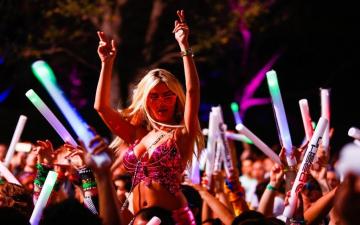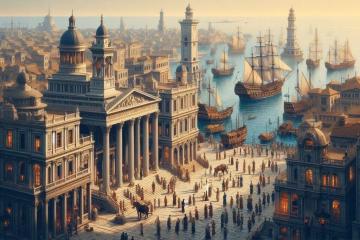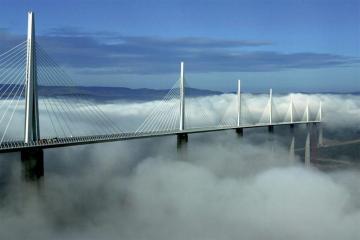From Rio's samba spectacle to Venice's masked elegance, explore 10 unique festivals that showcase human creativity, cultural diversity, and the universal spirit of celebration. Uncover…


Situated among the blue waves of the Indian Ocean, some 2,000 kilometers off East Africa’s southeast coast, Mauritius is a magical island republic. Officially the Republic of Mauritius, this tropical paradise boasts a rich history, varied culture, and breathtaking natural beauty that enthralls both people living here and visitors. Along with the French overseas department of Réunion, Mauritius also includes Rodrigues, Agaléga, and St. Brandon (Cargados Carajos shoals), comprising part of the scenic Mascarene Islands from whose main island the republic is based.
Although Mauritius seems little in terms of area—2,040 square kilometers—its impact and appeal go much beyond its borders. With an exclusive economic zone spanning an amazing 2,300,000 square kilometres, the country highlights its strategic value in the area. Situated on the main island, Port Louis, the capital and biggest city of the nation acts as its cultural and economic center.
Mauritius’s varied population reflects a rich tapestry of civilizations and nationalities, just as its terrain does. The majority are Indo-Mauritians; other Creole, Sino-Mauritian, and Franco-Mauritian groups add to the island’s distinct social fabric. The religious scene of the island clearly shows this variety; Mauritius is the only African country where Hinduism is most followed. A monument to the nation’s dedication to unity in variety, the harmonic cohabitation of many religions and cultures is evidence.
Mauritius’s past is an intriguing one of colonization, exploration, and finally freedom. The first documented mention to the island comes from the Cantino planisphere, a Portuguese map dated 1502, which names the desolate island Dina Arobi and implies that Arab mariners first came upon it about 975 CE. Portuguese adventurers did not explore the island, meanwhile, until 1507; they noted it on their charts as Cirne or Do-Cerne.
First to try permanent colonization in 1598, the Dutch called the island Maurice, Prince of Orange. Though they tried to create sugar and arrack production and utilize the ebony woods, their settlement attempts were brief. Renaming the deserted island “Isle de France,” France seized it in 1715 and started a period of colonization and development.
Following their seizure of Mauritius from France in 1810, the British Empire started their participation in the island Under the Treaty of Paris four years later, France gave Mauritius and her colonies to the United Kingdom. Mauritius developed as a major sugar-producing colony under British control, a legacy that would define its society and economy for next centuries.
When Mauritius won its freedom in 1968, the island country entered a new chapter. Full sovereignty has not, however, been without difficulties. To establish the British Indian Ocean Territory (BIOT), the UK split the Chagos Archipelago from Mauritius territory in 1965, before independence. This divisive choice resulted in the indigenous population being forcibly expelled and Diego Garcia, the biggest island, leased to the US for military use.
Between Mauritius and the UK, the sovereignty debate over the Chagos Archipelago has been divisive. Significantly in nature, the International Tribunal for the Law of the Sea has mandated the Chagos Islands’ return to Mauritius, therefore enabling a major step towards the resolution of this ongoing conflict.
Among African nations, Mauritius is notable as a shining example of democracy and economic development. Apart from being the only African nation ranked as a full democracy by the Economist’s Democracy Index, the administration of the nation is quite reminiscent of the Westminster parliamentary structure. Mauritius’s great scores on political and economic freedom indexes are a result of this dedication to democratic values.
Economically, Mauritius has achieved amazing progress from a mostly sugar-dominated plantation-based economy to a varied and competitive modern one. Mauritius ranks 72nd worldwide in the Human Development Index and the World Bank labels it as a high-income economy. Ensuring a good quality of living for its people, the welfare state model of the nation offers free universal healthcare, education up to the tertiary level, and public transportation for seniors, handicapped, and student populations.
Among Mauritius’ most appreciated features is its natural beauty. Comprising the Mascarene Islands, it features a biodiverse flora and fauna including numerous species particular to the nation. Once among several other avian species, the island’s environment included the well-known dodo, which went extinct soon after human habitation. Efforts at great conservation to safeguard other endemic species including the pink pigeon, the Mauritius kestrel, and the echo parakeet have been sparked by this loss.
Two UNESCO World Heritage Sites from Mauritius, Aapravasi Ghat and Le Morne Cultural Landscape, clearly show its dedication to safeguarding its natural legacy. Furthermore under consideration for UNESCO World Heritage classification is the Black River Gorges National Park, which emphasizes the continuous efforts of the nation to preserve its special ecosystems.
Now a prominent travel destination, Mauritius’s tourism industry forms one of the primary foundations of the economy today. Its tropical temperature, immaculate beaches, warm clean seas, and chance to encounter a vibrant multi-ethnic culture draw visitors. The appeal of the island nation is shown in the rising number of visitors; forecasts show ongoing increase in the next years.
Currency
Founded
Calling code
Population
Area
Official language
Elevation
Time zone
Port Louis, the vibrant capital and largest city of Mauritius, exemplifies the island nation’s extensive history, cultural variety, and economic strength. Situated on the northwestern shore of this tropical haven, Port Louis functions as the vibrant core of Mauritius,…
From Rio's samba spectacle to Venice's masked elegance, explore 10 unique festivals that showcase human creativity, cultural diversity, and the universal spirit of celebration. Uncover…

Discover the vibrant nightlife scenes of Europe's most fascinating cities and travel to remember-able destinations! From the vibrant beauty of London to the thrilling energy…

From Alexander the Great's inception to its modern form, the city has stayed a lighthouse of knowledge, variety, and beauty. Its ageless appeal stems from…

The 7 Wonders of the 21st Century feature amazing successes redefining human creativity and engineering capability. From the calm Temple of Buddha's Origin in Leshan,…

Millions of visitors come to Spain annually because of its vibrant culture, fascinating past, and amazing scenery. Still, the real spirit of Spain is found…

© All Rights Reserved. By Travel S Helper